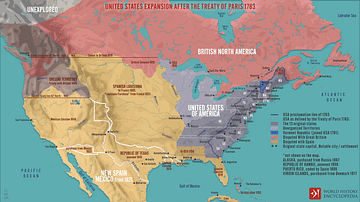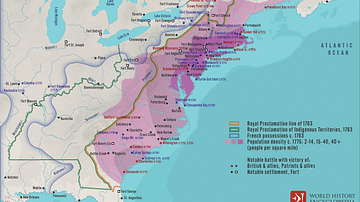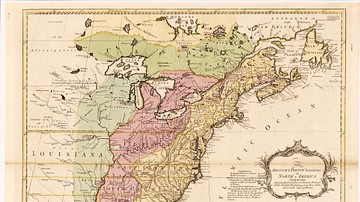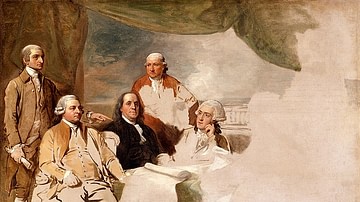Illustration
This map illustrates the course and key developments of the French and Indian War (1754–1763), the North American theater of the global Seven Years' War between Great Britain and France. It shows the territorial struggles, shifting alliances, and decisive battles that reshaped colonial power in the Americas.
The conflict began in 1754, with France, its colonists, and Native allies (referred to at the time as “Indians”) opposing British forces, colonial militias, and the Iroquois Confederacy. Some Indigenous groups and frontier settlers shifted allegiances over the course of the war, responding to changing threats and opportunities. The war concluded with the Treaty of Paris in 1763, in which France ceded Canada and all claims east of the Mississippi River (excluding New Orleans) to Britain. While securing vast new territories, the war’s cost and frontier policies sowed colonial resentment—laying the groundwork for the American Revolution a decade later.
About the Author
Cite This Work
APA Style
Netchev, S. (2023, October 23). North America in the French and Indian War 1754–1763. World History Encyclopedia. Retrieved from https://www.worldhistory.org/image/18049/north-america-in-the-french-and-indian-war-1754-17/
Chicago Style
Netchev, Simeon. "North America in the French and Indian War 1754–1763." World History Encyclopedia. Last modified October 23, 2023. https://www.worldhistory.org/image/18049/north-america-in-the-french-and-indian-war-1754-17/.
MLA Style
Netchev, Simeon. "North America in the French and Indian War 1754–1763." World History Encyclopedia. World History Encyclopedia, 23 Oct 2023, https://www.worldhistory.org/image/18049/north-america-in-the-french-and-indian-war-1754-17/. Web. 29 Jun 2025.








